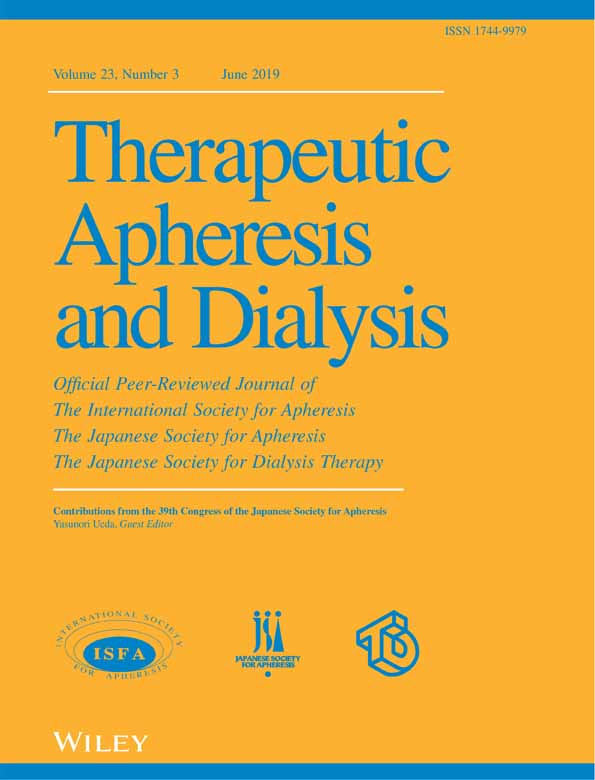A Solution Kinetics Simulation Method for Conventional and Selective Plasma Exchange Using a Complete Mixed Reactor Model
Abstract
At present, conventional plasma exchange (CPE) sets removal rate, replacement fluid volume and replacement fluid albumin (Alb) concentration according to the first-order kinetics of mass balance for removal of pathogenic substances. With the spread of selective plasma exchange (SePE), it has become necessary to set the removal rate and replacement fluid Alb concentration based on the initial concentration for each performance of the plasma separator. Considering the patient as a single reactor we devised a complete mixed reactor model simulating the concentration change in the reactor. Our formula is obtained by adding membrane performance and replacement fluid concentration to formulas currently available and can be used for both CPE and SePE. For the in vitro experiment, fresh frozen plasma stored in a bag was used to simulate a patient's circulating plasma. Plasma was separated by plasma separator Evacure EC-4A10 (EC-4A) (Kawasumi Laboratories Inc., Tokyo, Japan) while a replacement Alb solution was simultaneously entered into the circuit at the same rate as separation. IgG, Alb, total protein (TP), and fibrinogen (Fib) concentrations were measured every 10 min and examined for correlation with the value predicted by the mass balance formula. The concentration of each solute was measured 21 times during the 195 min of the experiment. The rate of change of each solute was IgG 76%, Alb 58%, TP 58%, and Fib 32%. Experimental values and predicted values showed significant correlation (IgG: r2 = 0.9962; Fib: r2 = 0.9535; Alb: r2 = 0.9808; TP: r2 = 0.9721, all P < 0.05). Since the solute concentration change in SePE can be predicted, this mass balance formula is useful for setting treatment conditions for both CPE and SePE.




